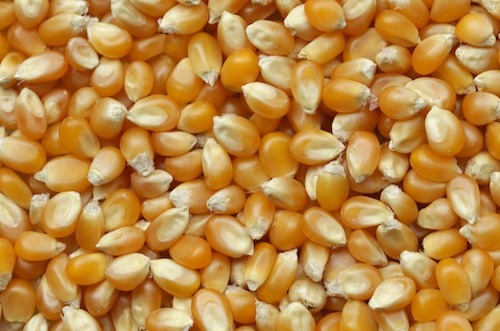W30: Maize (Corn) Update

In W30 in the maize (corn) landscape, in its July forecast, the Monitoring Agricultural Resources (MARS) expects the highest average European Union (EU) grain corn yields in 2023 in Greece at 11.4 metric tons (mt)/hectare (ha) and the lowest in Romania at 5.03 mt/ha. In Poland, the expected average yield is 6.88 mt/ha, 1% lower than in 2022 and 1% higher than the five-year average. For EU green corn, the highest average yields are anticipated in Italy at 54.1 mt/ha and the lowest in Greece at 24.1 mt/ha. The projected average yield in Poland is 45.0 mt/ha, 6% lower than in 2022 and 1% less than the five-year average. The EU's average expected yield for green corn is 40.6 mt/ha.
The Brazilian cereal production volume in the 2022/23 season is estimated at 317.6 million metric tons (mmt). This is a significant growth of 16.5% year-on-year (YoY) and the highest production on record. Brazilian corn production, including all three crops, is forecast at 127.8 mmt, a 12.9% increase of 14.6 mmt from the 2021/22 season. This surge in production, along with higher global demand, is expected to boost maize exports to 48 mmt, a 27.6% increase. On the other hand, domestic stocks are projected to grow to 10.3 mmt, up 27.6% at the end of the 2022/23 season. These positive developments are attributed to the improved corn second harvest yields, supported by favorable weather conditions.
The National Supply Company (Conab) reports that the second-crop corn (safrinha) harvest in Brazil as of July 22 reached 48% of the planned area. This is a 9% week-on-week (WoW) increase but lagging behind the 60% progress of 2022. The states of Mato Grosso and Goiás made significant advancements due to dry weather. However, some regions faced challenges with limited free storage tanks affecting the harvest campaign. In Parana state, slow progress was observed due to recent rains and strong winds, with only 6% of the corn area threshed compared to 30% a year earlier. Additionally, the safrinha harvest has not yet begun in most regions of Mato Grosso do Sul due to rains and low temperatures during July.
The Buenos Aires Grain Exchange (BCBA) reports that the corn harvest in Argentina progressed by 2.3% in W30, reaching 68.4% of the total sown area. The commercial corn grain harvest is progressing slowly, primarily targeting late sowings that are being harvested with higher-than-ideal grain moisture levels due to limited cereal supply. Currently, the BCBA indicates that 11% of Argentina's corn crops were rated as good or excellent, 43% as fair, and 46% as fair or poor. Additionally, 54% of the area had adequate or excellent water conditions, while 46% had regular or dry conditions.
Lastly, corn trade in Russia remained limited in W30, with most export shipments recorded in the low-water areas of the Caspian Sea. Despite low export volumes, there was a significant demand for Russian corn, especially from Turkey and Iran. Corn prices are anticipated to continue strengthening further, particularly considering the expected decrease in the export duty on corn in the coming two weeks. The export duty is estimated at around USD 2.15 to 3.22/mt.



